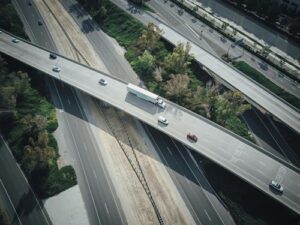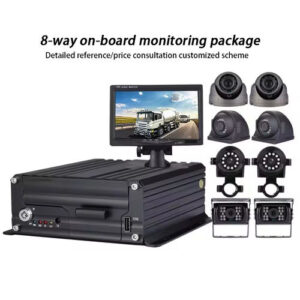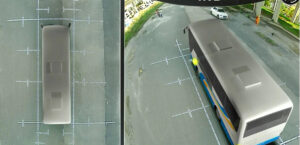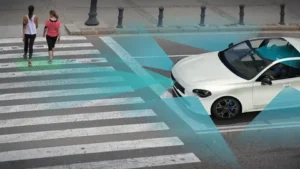A car camera is one of the most practical accessories for modern vehicles. Whether you’re a daily commuter, a rideshare driver, or a fleet manager, these devices provide unparalleled benefits in safety, security, and accountability.
In this article, we’ll explore everything you need to know about car cameras, including their features, benefits, types, applications, and tips for selecting the right one.
1. What is a Car Camera?
A car camera, often referred to as a dash cam or vehicle camera system, is a compact recording device installed in a vehicle to capture video footage of the road, vehicle interior, or surrounding areas. These cameras are designed to automatically record while driving, ensuring that all incidents, scenic drives, or unexpected moments are captured in real-time.
Modern car cameras come equipped with advanced features like high-definition recording, GPS tracking, night vision, and even AI-powered safety alerts.
2. Types of Car Cameras
Car cameras come in various configurations to suit different needs. Here are the main types:
2.1 Front-Facing Camera
- Captures the road ahead.
- Ideal for accident documentation and monitoring traffic conditions.
2.2 Dual-Lens Camera
- Records both the road ahead and the interior of the car.
- Perfect for rideshare drivers and taxi services.
2.3 Rear Camera
- Focuses on the area behind the vehicle.
- Assists with parking and provides evidence in rear-end collisions.
2.4 Multi-Camera System
- Includes front, rear, and side cameras for 360-degree coverage.
- Common in fleet and commercial vehicles.
2.5 Hidden or Discreet Cameras
- Small and unobtrusive designs that don’t interfere with the driver’s view.
- Useful for stealth recording.
3. Key Features of a Car Camera
3.1 High-Definition Video
- A resolution of at least 1080p ensures clear and detailed recordings.
- 4K cameras provide exceptional clarity for reading license plates and road signs.
3.2 Night Vision
- Infrared or low-light technology allows clear recordings in darkness or poor lighting.
3.3 GPS Integration
- Tracks location, speed, and routes, offering valuable data for both personal and fleet use.
3.4 G-Sensor
- Automatically saves footage when it detects sudden movements or impacts, preventing overwriting of critical events.
3.5 Parking Mode
- Records activity when the vehicle is stationary, providing protection against vandalism or hit-and-runs.
3.6 Cloud Storage
- Back up recordings to the cloud, ensuring footage is safe even if the camera is damaged or stolen.
3.7 AI and Safety Features
- Driver assistance alerts, such as lane departure warnings and collision detection, enhance road safety.
4. Benefits of Using a Car Camera
4.1 Evidence in Accidents
- Car cameras provide indisputable evidence in case of accidents, helping resolve disputes with insurers or law enforcement.
4.2 Protection Against Fraud
- Prevents false claims or staged accidents, especially in areas where insurance fraud is common.
4.3 Improved Driver Accountability
- Encourages safe driving habits by monitoring speed, braking, and overall behavior.
4.4 Parking Security
- Protects your vehicle while parked by capturing footage of potential vandalism, theft, or hit-and-runs.
4.5 Peace of Mind
- Provides a sense of security, knowing that incidents on the road are documented and can be reviewed if needed.
4.6 Scenic Recordings
- Capture memorable road trips or scenic drives effortlessly.
5. Applications of Car Cameras
Car cameras are versatile tools with wide-ranging applications:
5.1 Personal Use
- Everyday drivers use car cameras for accident evidence, parking security, and recording road trips.
5.2 Rideshare and Taxi Drivers
- Rideshare drivers use car cameras to monitor passenger interactions, ensuring safety and accountability.
5.3 Fleet Management
- Logistics companies install car cameras in their fleets to monitor driver behavior, optimize routes, and ensure compliance with safety protocols.
5.4 Public Transportation
- Buses, taxis, and shuttles use car cameras to ensure passenger safety and monitor driver performance.
5.5 Law Enforcement
- Police vehicles rely on car cameras to document incidents, traffic stops, and emergencies.
6. How to Choose the Right Car Camera
6.1 Assess Your Needs
- Decide whether you need a basic front-facing camera, a dual-lens setup, or a multi-camera system for comprehensive coverage.
6.2 Check Video Quality
- Opt for at least 1080p resolution. For sharper details, especially in commercial settings, consider 2K or 4K cameras.
6.3 Evaluate Storage Options
- Ensure sufficient storage capacity, with options for SD cards or cloud storage for extended recording.
6.4 Look for Advanced Features
- Features like GPS, night vision, parking mode, and AI safety alerts enhance functionality.
6.5 Budget
- Car cameras range from $50 for basic models to $500+ for premium systems. Choose one that balances features and cost.
6.6 Read Reviews
- Check user and expert reviews to ensure the product’s reliability and performance.
7. Installing a Car Camera
Installing a car camera is simple but requires careful positioning for optimal performance:
7.1 Placement
- Install the camera behind the rearview mirror for a clear view of the road.
- Ensure it doesn’t obstruct the driver’s vision.
7.2 Wiring
- Plug the camera into the car’s power outlet or use a hardwiring kit for a cleaner setup.
7.3 Testing
- Test the camera’s angle and adjust as needed to capture the desired field of view.
8. Maintaining Your Car Camera
Regular maintenance ensures your car camera operates effectively:
8.1 Clean the Lens
- Use a microfiber cloth to remove dust and smudges for clear footage.
8.2 Update Firmware
8.3 Check Storage
- Regularly transfer old footage to an external device or cloud storage.
- Format the SD card periodically to prevent data corruption.
8.4 Inspect Wiring
- Check cables and connections to avoid interruptions in power supply or recording.
9. Future Trends in Car Cameras
The car camera market continues to evolve with technological advancements:
9.1 Artificial Intelligence
- AI-powered cameras analyze driving behavior, detect potential hazards, and issue real-time alerts.
9.2 IoT Integration
- Smart car cameras connect to the Internet of Things (IoT), enabling remote access and live streaming.
9.3 Advanced Driver Assistance Systems (ADAS)
- Features like automatic braking and adaptive cruise control are being integrated into car cameras.
9.4 360-Degree Cameras
- Full-surround recording is becoming more accessible, providing comprehensive coverage of the vehicle’s environment.
9.5 Cloud-Based Systems
- Cloud connectivity allows seamless sharing of footage and ensures secure backups.
10. Conclusion
A car camera is more than just a recording device; it’s a powerful tool for enhancing safety, accountability, and convenience on the road. Whether for personal use, rideshare driving, or fleet management, investing in a reliable car camera offers peace of mind and tangible benefits.
By understanding its features, benefits, and applications, you can select the right camera to suit your needs and enjoy a safer, more secure driving experience.






